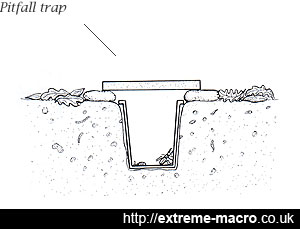

Schultz (eds), Ants: Standard Methods for Measuring and Monitoring Biodiversity. Spatial and temporal aquatic-terrestrial transitions in the temporary Albarine River, France: responses of invertebrates to experimental rewetting. Invertebrates and sestonic matter in an advancing wetted front travelling down over a dry riverbed (Albarine, France). Philosophical Transaction of the Royal Society 345: 101–118.Ĭorti, R. Estimating terrestrial biodiversity through extrapolation. User’s Guide and application published at. EstimateS: statistical estimation of species richness and shared species from samples. Thermal and water relations of desert beetles. Australian Journal of Ecology 18: 117–143.Ĭloudsley-Thompson, J. Non-parametric multivariate analyses of changes in community structure. Diel variation in surface and subsurface microbial activity along a gradient of drying in an Australian sand-bed stream. Neotropical Entomology 39: 912–917.Ĭlaret, C. Efficient sampling of ground-dwelling arthropods using pitfall traps in arid steppes. Journal of Arid Environments 1: 43–49.Ĭheli, G. Dew, fog and hygroscopic food as a source of water for desert arthropods. Diversity of Chrysomelidae (Coleoptera) in Galicia, Northwest Spain: estimating the completeness of the regional inventory.

Entomologica Fennica 6: 65–77.īaselga, A. A comparison of pitfall trapping and quadrat sampling of Carabidae (Coleoptera) on river banks.

The large number of samples required at our study sites to reach a high level of sampling completeness suggests that the diversity of ground-dwelling invertebrates in dry riverbeds has probably been underestimated in previous studies.Īndersen, J., 1995. Differences in the performance of pitfall traps and quadrats in dry riverbeds may be due to the absence of vegetation, to the large range of taxa considered, and to diel movements of some taxa. Rarefaction curves indicated that eight to eleven pitfall traps/100 m 2 were necessary to collect most of the common taxa in the study sites. Among-sites differences in invertebrate composition were greater in pitfall-trap samples than in quadrat samples. Among all taxa collected, 80% were exclusive to pitfall traps and 4% to quadrat samples. On average, pitfall-trap samples contained 3.5 times more taxa than quadrat samples, and pitfall traps required less time to collect as many taxa as quadrats. Sampling efficiency and completeness and detection biases associated with pitfall-trap and quadrat samples were compared at six sites in the dry beds of two New Zealand rivers. The distribution and ecological roles of ground-dwelling invertebrates colonizing dry beds of temporary rivers are poorly known, due in part to the lack of tested sampling methods.


 0 kommentar(er)
0 kommentar(er)
